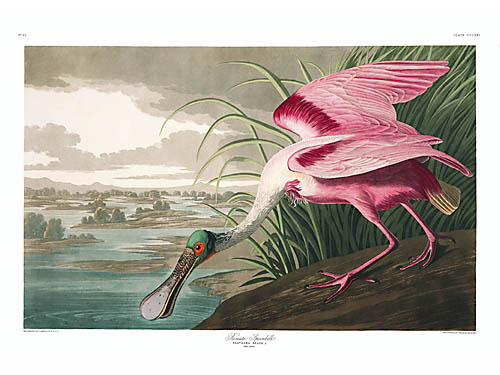|
||||||||||||||||||||
|
||||||||||||||||||||
|
|
||||||||||||||||||||
|
Ornithological Biography This beautiful and singular bird, although a constant resident in the southern extremities of the peninsula of Florida, seldom extends its journeys in an eastern direction beyond the State of North Carolina. Indeed it is of extremely rare occurrence there, and even in South Carolina, my friend JOHN BACHMAN informs me that he has observed only three individuals in the course of twenty years. He once obtained a specimen in full plumage about ten miles north of Charleston. It is rarely seen in the interior of the country at any distance from the waters of the Atlantic, or those of the Gulf of Mexico. A specimen sent to WILSON at Philadelphia from the neighbourhood of the city of Natchez, in the State of Mississippi, appears to have lost itself, as during my stay in that section of the country I never heard of another; nor have I ever met with one of these birds farther up the Mississippi than about thirty miles from its mouths. Although rather abundant on some parts of the coast of Florida, I found it more so along the Bay of Mexico, particularly in Galveston Bay in the Texas, where, as well as on the Florida Keys, it breeds in flocks. The Spoonbills are so sensible of cold, that those which spend the winter on the Keys, near Cape Sable in Florida, rarely leave those parts for the neighbourhood of St. Augustine before the first days of March. But after this you may find them along most of the water courses running parallel to the coast, and distant about half a mile or a mile from it. I saw none on any part of the St. John’s river; and from all the answers which I obtained to my various inquiries respecting this bird, I feel confident that it never breeds in the interior of the peninsula, nor is ever seen there in winter.
The Roseate Spoonbill is found for the most part along the marshy and muddy borders of estuaries, the mouths of rivers, ponds, or sea islands or keys partially overgrown with bushes, and perhaps still more commonly along the shores of those singular salt-water bayous so abundant within a mile or so of the shores, where they can reside and breed in perfect security in the midst of an abundance of food. It is more or less gregarious at all seasons, and it is rare to meet with fewer than half a dozen together, unless they have been dispersed by a tempest, in which case one of them is now and then found in a situation where you would least expect it. At the approach of the breeding season, these small flocks collect to form great bodies, as is the manner of the Ibises, and resort to their former places of residence, to which they regularly return, like Herons. During the moult, which takes place in Florida late in May, the young of the preceding year conceal themselves among the close branches of the mangroves and other trees growing over narrow inlets, between secluded keys, or on bayous, where they spend the whole day, and whence it is difficult to start them. Toward night they return to their feeding grounds, generally keeping apart from the old birds. In the same country the old birds pass through their spring moult early in March, after which they are truly beautiful, presenting Page 1. The Roseate Spoonbill is found for the most part along the marshy and muddy borders of estuaries, the mouths of rivers, ponds, or sea islands or keys partially overgrown with bushes, and perhaps still more commonly along the shores of those singular salt-water bayous so abundant within a mile or so of the shores, where they can reside and breed in perfect security in the midst of an abundance of food. It is more or less gregarious at all seasons, and it is rare to meet with fewer than half a dozen together, unless they have been dispersed by a tempest, in which case one of them is now and then found in a situation where you would least expect it. At the approach of the breeding season, these small flocks collect to form great bodies, as is the manner of the Ibises, and resort to their former places of residence, to which they regularly return, like Herons. During the moult, which takes place in Florida late in May, the young of the preceding year conceal themselves among the close branches of the mangroves and other trees growing over narrow inlets, between secluded keys, or on bayous, where they spend the whole day, and whence it is difficult to start them. Toward night they return to their feeding grounds, generally keeping apart from the old birds. In the same country the old birds pass through their spring moult early in March, after which they are truly beautiful, presenting the appearance which I have attempted to represent in the late before you. The sight of a flock of fifteen or twenty of these full-dressed birds is extremely pleasing to the student of nature, should be conceal himself from their view, for then he may observe their movements and manners to advantage. Now, they all stand with their wings widely extended to receive the sun’s rays, or perhaps to court the cooling breeze, or they enjoy either seated on their tarsi. Again, they all stalk about with graceful steps along the margin of the muddy pool, or wade in the shallows in search of food. After awhile they rise simultaneously on wing, and gradually ascend in a spiral manner to a great height, where you see them crossing each other in a thousand ways, like so many Vultures or Ibises. At length, tired of this pastime, or perhaps urged by bunger, they return to their feeding grounds in a zigzag course, and plunge through the air, as if displaying their powers of flight before you. These birds fly with their necks stretched forward to their full length, and their legs and feet extended behind, moving otherwise in the manner of Herons, or with easy flapping, until about to alight, when they sail with expanded wings, passing once or twice over the spot, and then gently coming to the ground, on which they run a few steps. When travelling to a distant place they proceed in regular ranks, but on ordinary occasions they fly in a confused manner. When the sun is shining, and they are wheeling on wing previous to alighting, their roseate tints exhibit a richer glow, which is surpassed only by the brilliancy of the Scarlet Ibis and American Flamingo. This beautiful bird is usually fond of the company of our different Herons, whose keen sight and vigilance are useful to it in apprising it of danger, and allowing it to take flight in due time. When the Spoonbills are by themselves and feeding, they can easily be approached by those who, like yourself perhaps, are expert at crawling over the mud on hands and knees, through the tall and keen-edged saw-grass. I well recollect my own success when, after having seen three of these precious birds alight on their feeding grounds, about a quarter of a mile from where I stood, I managed, after something short of half an hour, to get within shot of them. Then, after viewing them for awhile unseen, I touched one of my triggers, and two of them fell upon the surface of the shallow water. The other might, I believe, have been as easily shot, for it stood, as I have seen Wild Turkey cocks do on like occasions, looking with curious intensity as it were upon its massacred friends, until, seeing me get up and wade towards them, it hurriedly extended its broad wings, and flew off towards the sea-shore. When wounded in the wing, they make towards deeper water, and, if closely pursued, will swim to some distance, but without ever attempting to dive, and when at last seized, offer no resistance. On the contrary, if their wings are uninjured, though they may otherwise be severely wounded, they rise and fly to a great distance, or drop while on the way. I have considered these birds as tough to kill, and, when on open ground, even without being in company with Herons, as difficult of approach. They are as nocturnal as the night Heron, and, although they seek for food at times during the middle of the day, their principal feeding time is from near sunset until daylight. To all such feeding grounds as are exposed to the tides, they betake themselves when it is low water, and search for food along the shallow margins until driven off by the returning tide. Few birds are better aware of the hours at which the waters are high or low, and when it is near ebb you see them wending their way to the shore. Whenever a feeding place seems to be productive, the Spoonbills are wont to return to it until they have been much disturbed, and persons aware of this fact may waylay them with success, as at such times one may shoot them while passing over head. To procure their food, the Spoonbills first generally alight near the water, into which they then wade up to the tibia, and immerse their bills in the water or soft mud, sometimes with the head and even the whole neck beneath the surface. They frequently withdraw these parts however, and look around to ascertain if danger is near. They move their partially opened mandibles laterally to and fro with a considerable degree of elegance, munching the fry, insects, or small shell-fish, which they secure, before swallowing them. When there are many together, one usually acts as sentinel, unless a Heron should be near; and in either case you may despair of approaching them. I have never seen one of these birds feeding in fresh water, although I have been told that this is sometimes the case. To all those keys in the Floridas in which ponds have been dug for the making of salt, they usually repair in the evening for the purpose of feeding; but the shallow inlets in the great salt-marshes of our southern coasts are their favourite places of resort.
The Roseate Spoonbills alight on trees with as much facility as Herons; and even walk on their large branches. They usually nestle on the tops of the mangroves, placing their nests at the distance of a few yards from each other. They are formed of sticks of considerable size and are flat, like most of those of the Heron tribe. The eggs are laid about the middle of April, and are usually three. They measure two niches and five-eighths in length, an inch and seven-eighths in their greatest breadth, are slightly granulated, almost equally rounded at both ends, and have a pure white color. I have never seen the young when recently hatched; but while able to fly they are greyish-white. The bill is then quite smooth, of a yellowish-green colour, as are the legs and feet, as well as the skin on part of the head. Young birds in their second year have the wings and the lower wing-coverts of a pale roseate tint, the bill more richly coloured, and the legs and feet dark brownish-red, or purplish. At this age, they are unadorned with the curling feathers on the breast; but in the third spring the bird is perfect, although it increases in size for several seasons after. I have never seen one of these birds of the bright red colour assigned to them by some authors. While on one of the islands of Galveston Bay in Texas, I found eight or ten nests of these birds, placed in low cactuses, amid some hundreds of nests belonging to Herons of different species, but was not rendered aware of the fact until I compared the eggs found there with those procured in the Floridas, although I did at the time mention to my friend EDWARD HARRIS, and to my son, that I thought the eggs and nests of which I speak were those of the Roseate Spoonbill and not of the Herons. What rendered the fact doubtful, however, was, that no Spoonbills were to be seen, as they had all betaken themselves to flight on hearing the reports of our guns. In connection with the procuring of some of these birds, I find a rather curious occurrence recorded in my journal. On the 2nd of May, 1837, my party and I went on shore from the Revenue Cutter “Campbell,” on the island of Galveston, for the purpose of obtaining fish and prawns, the latter of which are in that country extremely abundant, and certainly the largest I have ever seen. Our fishing over, we were on the point of returning, when we saw three Spoonbills alight on a sand-bar, and almost immediately proceed to the water in search of food. My son was despatched after them, and having waded through some muddy parts of the inlet on the shore of which we were standing, he succeeded in getting near, and killed the finest of the three. Almost at the same instant, the back fins of a large fish, resembling those of a shark, were seen meandering above the surface of the shallow waters. My son received prompt intelligence of this, to enable him to make good his return. The monster moved about rather slowly, and JOHN having rammed home a couple of bullets, lodged them in its body, on which it floundered about apparently in great agony. One of our boats immediately pushed toward the spot, and my son was taken on board, while the animal used its best efforts to get into deeper water. Now sailors and all joined in the chase. The gun was again charged with balls, my son waded once more towards it, and lodged the missiles in its body, while from the bow of the boat it received several blows from the oars and gaff-hook. The tars all leaped into the water, and the bleeding fish was at once closely beset. The boatswain at a single lucky stroke cut off its tail, and having afterwards fastened the hook in one of its eyes, we dragged it to the beach. About a hundred Mexican prisoners, Texian soldiers, and officers, were there; but instead of our prize turning out a shark, it proved to be a sawfish, measuring rather more than twelve feet in length. From its body we took out alive ten young ones. It was cut into pieces by the Mexican prisoners, and soon devoured. Five or six of the young were put into rum, and ultimately carried to England. The feathers of the wings and tail of the Roseate Spoonbill are manufactured into fans by the Indians and Negroes of Florida; and at St. Augustine these ornaments form in some degree a regular article of trade. Their flesh is oily and poor eating. |
||||||||||||||||||||


| Home | Gallery | Audubon Biography | About Edition | Testimonials | Authorized Dealers | Links | Contact Us |
| SEARCH RESULTS | |||
| Divers of Lakes and Bays, Wanderers of Seas and Coasts | |||
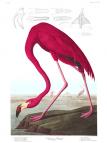 | Plate: 431 American Flamingo | ||
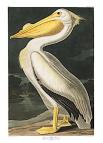 | Plate: 311 American White Pelican | ||
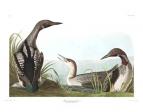 | Plate: 346 Black-throated Diver | ||
 | Plate: 307 Blue Crane or Heron | ||
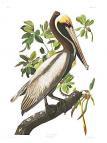 | Plate: 251 Brown Pelican | ||
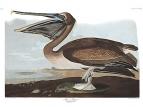 | Plate: 421 Brown Pelican | ||
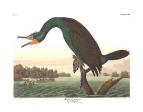 | Plate: 252 Florida Cormorant | ||
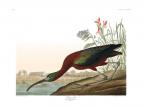 | Plate: 387 Glossy Ibis | ||
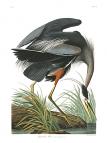 | Plate: 211 Great Blue Heron | ||
| |||

© Copyright 2007-2025 Zebra Publishing, LLC. | All Rights Reserved Terms of Use
Powered by Fusedog Media Group
